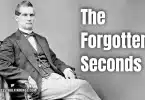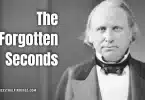Early Family Roots in New York and England
Daniel D. Tompkins was born on June 21, 1774, in the town of Scarsdale in Westchester County, New York. He came into a world still under British rule, just two years before the colonies would declare their independence. His family roots traced back to England, where the name Tompkins derived from a form of “Little Thomas’s son,” a patronymic surname that can be found as far back as the 1300s in the county of Kent. The Tompkins family likely came to the American colonies in the mid-1600s during the great wave of English migration to the New World.
His father, Jonathan Griffin Tompkins, born in 1729, was a well-respected local figure—a farmer, a judge, and a supporter of the patriot cause. He played a civic role in the Scarsdale community during and after the Revolutionary War. His mother, Sarah Ann Hyatt, came from the Hyatt family of New York. The Hyatts, like the Tompkins family, had early English roots, with possible Dutch ancestry in some branches, common in the Hudson River Valley. The Hyatt and Tompkins lines came together in a home that valued faith, education, and public service.
Education and Legal Beginnings
Daniel was one of eleven children and grew up in a household where books were read, civic issues were discussed, and a sense of duty to country was instilled from an early age. The world around him was changing rapidly. As he came of age, the war for independence raged across the thirteen colonies, and the ideals of freedom, representation, and self-governance became guiding principles for the young nation—and for Daniel himself.
He was an outstanding student and enrolled at Columbia College (now Columbia University) in New York City. He graduated with high honors in 1795. At a time when higher education was reserved for the elite or the exceptionally gifted, his academic success marked him as someone to watch. After graduation, he read law under the well-known jurist James Kent, who would later become Chancellor of New York and author of the influential Commentaries on American Law. Daniel was admitted to the bar in 1797 and quickly began a legal career that placed him among the rising class of civic leaders in New York.
Marriage and Family Connections
In 1798, Tompkins married Hannah Minthorne, the daughter of a successful New York City merchant and alderman named Marius Minthorne. This marriage connected him with the city’s commercial elite, a strategic and personal partnership that helped open doors in political circles. Together, Daniel and Hannah had eight children, though like many families in the early 19th century, they experienced the loss of several children in infancy or childhood.
Rise in State Politics and the Governorship
Tompkins first entered politics in 1801 when he was elected to the New York State Assembly. By 1804, he had been appointed to the New York Supreme Court. But politics, not the bench, was his calling. In 1807, he ran for governor of New York as a Democratic-Republican and won, defeating Morgan Lewis. At just 33 years old, he became the chief executive of the most populous and economically powerful state in the Union.
He served as governor for ten years, from 1807 to 1817, and was re-elected four times. During his tenure, he focused on reforms that benefited working families and the common man. He advocated for improved public education and infrastructure, but the defining period of his governorship came during the War of 1812. With British forces threatening New York, Tompkins made extraordinary efforts to protect his state. When the federal government could not raise enough funds to equip the militia properly, Tompkins personally stepped in—borrowing money in his name and even mortgaging his property to ensure soldiers had weapons, uniforms, and supplies.
Personal Sacrifice During the War of 1812
His actions saved New York, but they came at a dear cost. Though he expected to be reimbursed by Congress, he never was, and the strain of carrying such personal debt weighed heavily on him for the rest of his life. Nevertheless, his selfless service earned him wide respect, and in 1816, he was nominated to serve as vice president alongside James Monroe.
Vice Presidency and Decline
Tompkins took office as vice president in 1817. His years in the national spotlight, however, were marked by declining health and increasing debt. His earlier sacrifices had not only emptied his finances but also taken a toll on his mind and body. He missed many Senate sessions, struggled to manage his affairs, and slowly withdrew from the duties of office. Though Monroe’s presidency is often remembered as a time of relative calm and prosperity, Tompkins remained a troubled figure in the background—well-meaning but frequently absent.
His condition deteriorated further in his second term, and his attempts to receive reimbursement for his war debts continued to fail. Political allies began to distance themselves, and his reputation suffered as a result. Even so, those who knew him well never doubted his sincerity, his patriotism, or his earlier achievements. But the vice presidency, for all its prestige, offered little comfort or support in his final years.
Final Years and Death
He left office in March 1825 and died just three months later on June 11, at the age of 50. His death came quietly, overshadowed by the deaths and legacies of other, better-remembered figures of the Founding Era. He was buried on Staten Island in the cemetery of the Moravian Church, far from the halls of power he once occupied.
Legacy and Historical Footnote
Today, a few places carry his name—Tompkins County in central New York and Tompkins Square Park in Manhattan—but little else remains to tell the story of a man who gave nearly everything he had for the country he served. He never published memoirs, and few personal letters survive. Still, historians recognize him as one of the most underappreciated public servants of the early republic.
Daniel D. Tompkins did not become president. He barely finished his time as vice president. But he gave more of himself—financially, physically, and emotionally—than many of his peers. In a time of crisis, he stepped forward not with words, but with action. That alone secures his place in the early American story.






